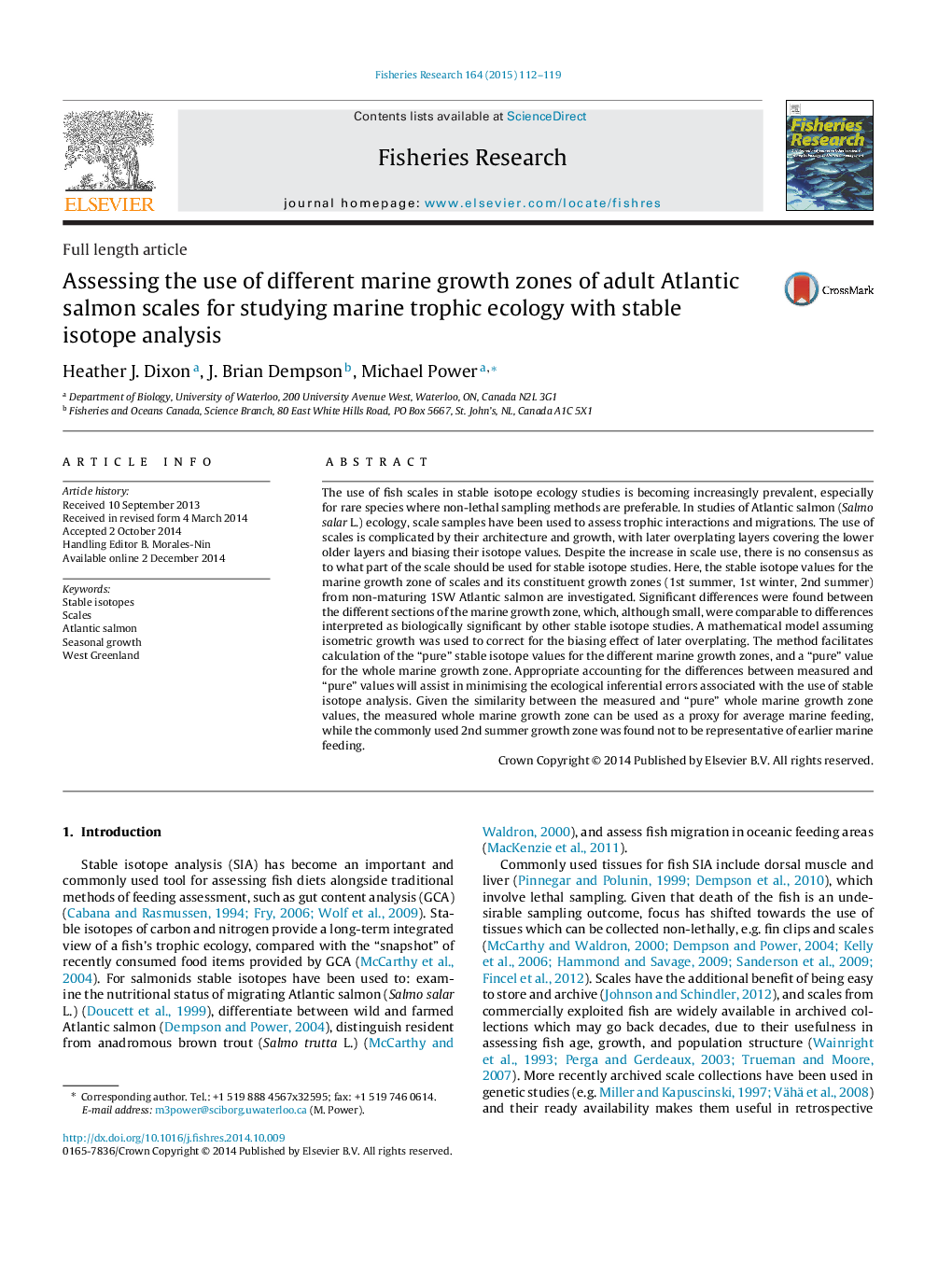| کد مقاله | کد نشریه | سال انتشار | مقاله انگلیسی | نسخه تمام متن |
|---|---|---|---|---|
| 6385674 | 1626804 | 2015 | 8 صفحه PDF | دانلود رایگان |
- Atlantic salmon scale architecture has biasing effects on stable isotope values.
- Different scale growth zones were analysed for stable isotopes to assess this bias.
- Significant differences were found between growth zones for δ13C, but not for δ15N.
- Whole marine growth zone found to be a useful proxy for average marine feeding.
- Second summer values not representative of earlier marine feeding.
The use of fish scales in stable isotope ecology studies is becoming increasingly prevalent, especially for rare species where non-lethal sampling methods are preferable. In studies of Atlantic salmon (Salmo salar L.) ecology, scale samples have been used to assess trophic interactions and migrations. The use of scales is complicated by their architecture and growth, with later overplating layers covering the lower older layers and biasing their isotope values. Despite the increase in scale use, there is no consensus as to what part of the scale should be used for stable isotope studies. Here, the stable isotope values for the marine growth zone of scales and its constituent growth zones (1st summer, 1st winter, 2nd summer) from non-maturing 1SW Atlantic salmon are investigated. Significant differences were found between the different sections of the marine growth zone, which, although small, were comparable to differences interpreted as biologically significant by other stable isotope studies. A mathematical model assuming isometric growth was used to correct for the biasing effect of later overplating. The method facilitates calculation of the “pure” stable isotope values for the different marine growth zones, and a “pure” value for the whole marine growth zone. Appropriate accounting for the differences between measured and “pure” values will assist in minimising the ecological inferential errors associated with the use of stable isotope analysis. Given the similarity between the measured and “pure” whole marine growth zone values, the measured whole marine growth zone can be used as a proxy for average marine feeding, while the commonly used 2nd summer growth zone was found not to be representative of earlier marine feeding.
Journal: Fisheries Research - Volume 164, April 2015, Pages 112-119
